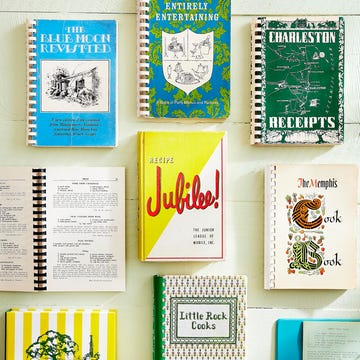Nothing screams summer like a perfectly ripe, juicy, and tangy heirloom tomato. Every year I plant at least eight tomato plants in our teeny tiny backyard. Because of factors beyond our control—rain, pests, just to name a few—some years yield better crops than others. But to give the plants the best fighting chance, I always use this tried-and-true tomato trellising method.
This method works for both determinate (varieties bred to produce a set amount of tomatoes) and indeterminate (those that produce fruit continuously under the right conditions) tomatoes but is essential for indeterminate tomatoes, as these plants can grow enormous and bend under the fruit's weight. Plant size is also why I don't use tomato cages; they're often inadequate, make harvesting difficult, and restrict airflow around the plant when it's confined, potentially leading to disease. Trellising also enables growing more tomatoes in a small space by utilizing vertical growth.
These are the supplies you'll need for your trellis:
- Metal fence posts, such as T-posts and T-post clips
- Thin rust-proof metal wire
- Garden twine
To build your trellis, start by planting the T-posts in the ground—the first one should be at the end of your row of plants, one or two more down the line of the plants (the number needed will depend on the number of tomatoes you are growing; I use 1 stake for every three plants), and another at the end. Next, run a length of wire between the stakes, close to the top (at least 6 feet high), attaching it with T-post clips or zip ties— this is your support wire.
Now that your support system is set up, you are ready to tie up your tomatoes. Working on one plant at a time, use a slipknot to loosely tie a long (at least 8 feet) piece of twine around the main stem of the plant. Do this toward the bottom of the plant and just under a sturdy branch. Don't tie the knot too tightly or it will pinch the stem, potentially killing the plant as it grows and gets thicker. Very gently wrap the twine around the plant's main stem once, then pull it up to the support wire and attach it.
As the tomato grows and needs more support, detach the twine from the support wire, wrap it around the tomato stem under a branch, and then reattach it to the wire. It's important NOT to wrap the twine around the stem just under a branch that has flowers or small tomatoes on it. These branches will droop when the fruit matures and becomes heavy, and the twine can pinch the branch where it meets the stem, causing it to die, thus killing your tomatoes.
Pro tip: Only handle your tomato plants when they are dry. This will help reduce the spread of disease.
Charlyne Mattox is the Food and Crafts director with over 20 years recipe development, recipe editing, and crafting experience. Prior to starting at Country Living in 2014, she worked in the crafts department at Martha Stewart Living and Martha Stewart Kids before attending cooking school at the Institute of Culinary Education in New York City. She was nominated for a James Beard media award while a senior editor at Real Simple magazine and authored a cookbook Cooking with Seeds.
When not in the kitchen she loves to garden, focusing on growing flowers and kitchen herbs (of course), watering her 25 house plants, and knitting scarfs or hats she will never be able to wear in the always hot and steamy Alabama.














